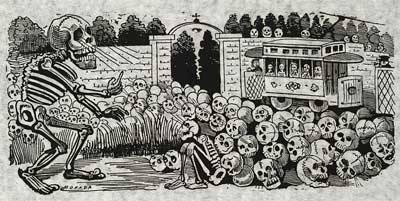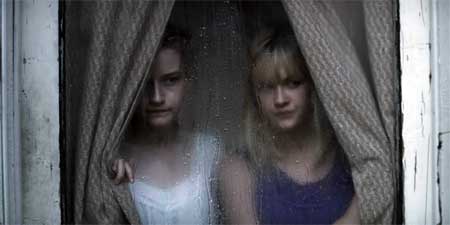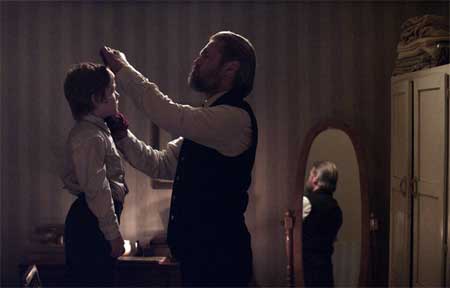Film (2013)
Inspired by Somos Lo Que Hay (Mexican, 2010), directed by Jorge Michel Grau
Directed by Jim Mickle
Screenplay by Nick Damici, Jim Mickle
With Kelly McGillis (Marge), Odeya Rush (Alyce Parker), Ambyr Childers (Iris Parker), Wyatt Russell (Deputy Anders), Julia Garner (Rose Parker), Michael Parks (Doc Barrow), Bill Sage (Frank Parker), Nick Damici (Sheriff Meeks), Jack Gore (Rory Parker)

“Gran calavera eléctrica (Grand electric skull)”
Based on a Mexican film of the same stripe, this film follows the doings of the Parker family, mostly inside the confines of their mysterious dwelling.
The paterfamilias, Jack (Bill Sage) has odd religious ideas. Early on we learn of his notions about abstinence from certain kinds of foods; no cereal for some period of time is ritually ordained, and little Rory (Jack Gore!) falls afoul of his Dad for downing some mistimed Cheerios. But that is the least of it; more dangerous culinary practices prevail. Amazingly, two beautiful, well-spoken, charming blond, daughters, Iris (Ambyr Childers) and Rose (Julia Garner), manage to keep their personalities intact through most of it, but even they wind up getting caught up in intense and personally challenging dining options.

Ambyr Childers as Iris
in “We Are What We Are”
© 2013 Entertainment One Films US
“We Are What We Are” is a truism, but it also is a statement of self-acceptance at whatever cost, and this family has paid the high price to abide by their practices and to stand by them as though they were truthful.
Regardless of the literal human price, such blind belief offers a potent narcotic influential in obedient child rearing. With just the right mixture of lunacy and terror, “Daddy” works miracles in controlling his children.
One can imagine a Mexican thriller on this theme dwelling on macabre Day of the Dead imagery. But in this American reworking, the setting is, surprisingly, somewhere in the Catskills of New York State. Even so, this is so dark that the terrifying Winter’s Bone (2010), by comparison, set in the creepiest backwoods shanties of Arkansas, seems like Goldilocks and the Three Bears.

Bill Sage as Frank
in ‘We Are What We Are’
© 2013 Entertainment One Films US
The revelations grow and build to a final scene, a true rival for Babette’s Feast in the horror realm. But, after that, the most chilling scene of the film appears, with characters simply driving in a car with a book on the seat. The real fright occurs after the flood.
There is nothing supernatural here, but neither is there much psychological probing. In Hitchock’s films, we usually get some perspective on the warped personalities involved and are frequently surprised by them in one way or another. Here, there are fewer surprises, save at the very end.
The film is reasonably well put together though there is a little dorkiness in the script here and there. When, for example, Iris and Anders (Wyatt Russell) are exchanging flirtations, he says I’ll see you around and she replies not if I see you first, it seems like an effort to underscore the seeming ordinariness obscuring the total weirdness, but it winds up just sounding trite.
There is also a medical component here, enough to give one serious diagnostic pause about the next bowl of soup one might ingest.
If one regards Hitchcock’s work as artful horror, one must call this sort of film art house horror, indie-bound in its considerable restraint, but perhaps appealing to a broader audience with its more vividly horrific moments, with somewhat less psychological exploration and less evolved cinematic technique than Hitchcock.
– BADMan
Leave a Reply